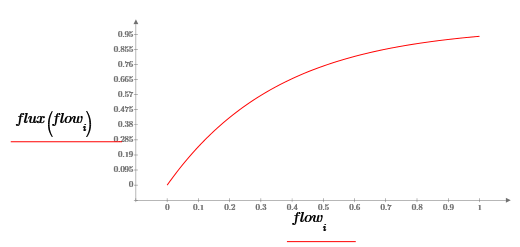Traction Control
Picture yourself on a soggy dirt road. For some reason you’ve stopped and want to get going again. Unfortunately, when you press the gas, one wheel spins. Pressing the gas more just makes it spin more and the car goes nowhere. Then you suddenly remember your car has traction control and activate it. The system applies the brakes to the slipping wheel so that power can go where it will do the most good.
Some say that adding balancing devices is like driving with the brakes on. In a way they’re right: balancing valves can only make the water flow slower in the circuit they’re connected to. Below we’ll explain why one would want to do that.
How Can I Have Spinning Tires in a Hydronic System?
The output of a coil “saturates” as the flow of water through it increases. That will be explained later for those interested. The point is: beyond a certain point more water flow helps very little in cooling or heating the room. Too much is pretty much like a spinning tire. If there’s twice the design flow, there might be only 5% more heat transfer while another room is being robbed of capacity.
Hydronic Traction Control
As with traction control on a vehicle, we slow the flow through the wild circuit so that power can go where it will do more good. Autoflow™, in particular, is good as traction control. If overflow would otherwise happen, Autoflow™ will add just the right restriction to prevent a large waste of flow. When the pump slows down or the control valve starts throttling so that an overflow would not happen, Autoflow™ opens fully so that it creates very little restriction. As the flow continues to reduce, the pressure drop of the balancing device reduces according to the square law, so at 50% flow the pressure drop through the balancing device is ¼ of what it is at full flow.
Why Does a Coil’s Output Saturate?
Heat transfer is dictated by the temperature gradient and some coefficients. This means that for a given incoming air temperature, air flow, and water inlet temperature there’s a theoretical limit for the heat transfer. If we imagine that the inner surface of the coil is all at the inlet water temperature, clearly the coil could not transfer more heat than what we would calculate. Also clearly, that state will never be reached: as we transfer heat the water changes temperature. For a typical air conditioning coil, the design flow is often as much as 94% saturated meaning that it produces 94% of that impossible theoretical limiting heat flux.
So, if a terminal flows twice what it should, the heat flux increases less than 6%. This remains true if it flows 4 times design flow. All that extra flow does is make noise, waste pump power, and make the chillers less efficient.


